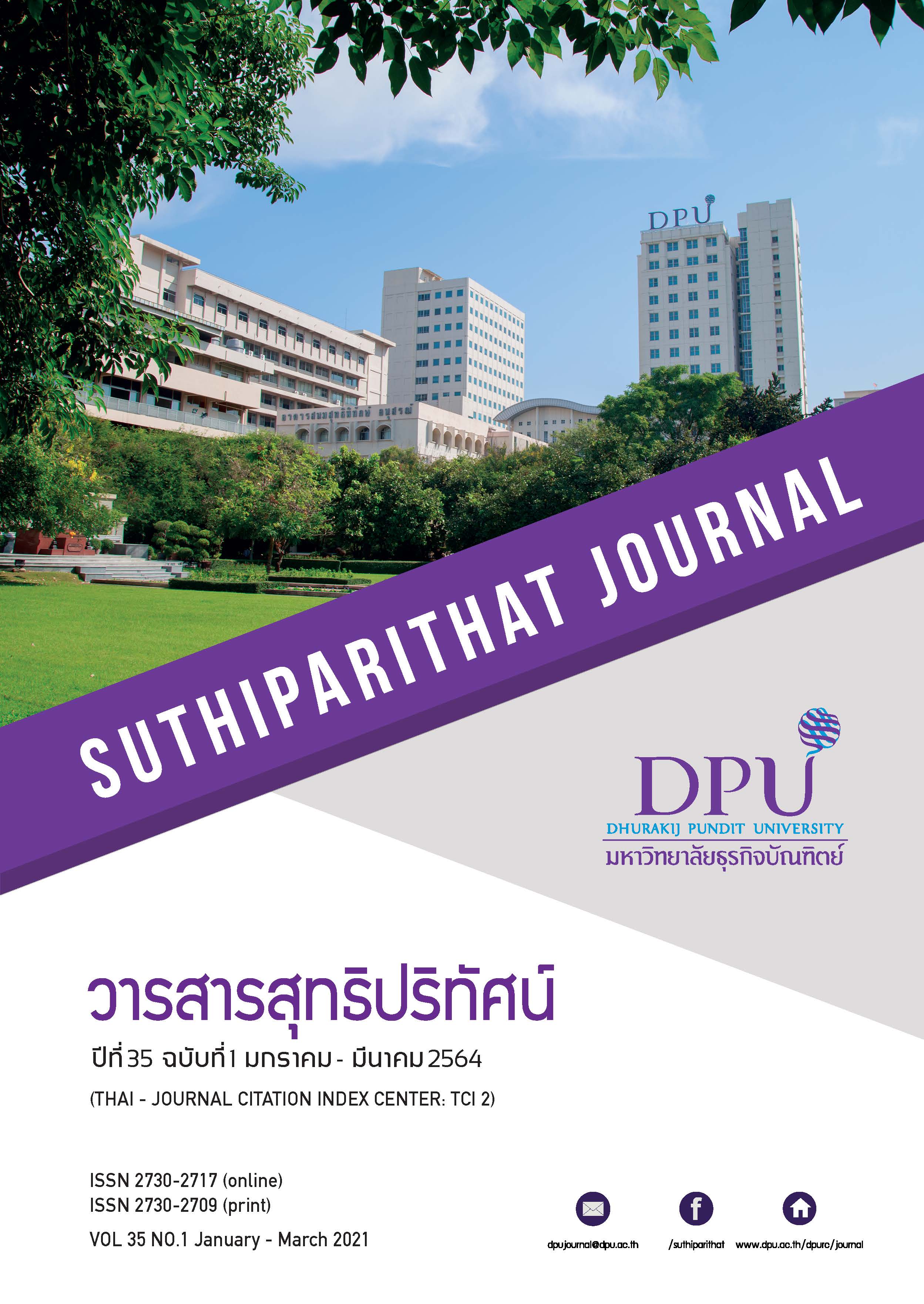QUALITATIVE APPROACHES USED IN ENGLISH FOR SPECIFIC PURPOSES RESEARCH: A TREND ANALYSIS
Keywords:
Trend Analysis, Qualitative Approaches, English for Specific Purposes (ESP) ResearchAbstract
This study primarily investigates the holistic trends of research methods and how qualitative approaches were used in English for Specific Purposes (ESP) research. The data employed in this study were 24 empirical research articles published in English for Specific Purposes journal (ESPj) from 2001 to 2019. The data analysis was divided into two phases. At the first phase, researchers appointed the period of publication as two timeframes: 2001-2014 and 2015-2019 to explore the trends holistically. All 24 research articles were then categorized into timeframe of publication in order to analyze research method by focusing on frequency. After that, they were compared and contrasted between both timeframes, together with previous studies. It was found that of 24, 12 articles are qualitative research, 8 articles are qualitative/quantitative or mixed methods research and 4 articles primarily are quantitative research. At the second phase, only 5 qualitative research articles published from 2015 to 2019 were further investigated in details and tallied since there has been no study found reporting ESP research trends in the mentioned period. Based on Creswell (2003) and Dressen-Hammouda (2013)’s definitions of research methods, the findings revealed that the ethnographic methods were overwhelmingly used and needs analysis was the research focus in most research articles.
References
Arnó-Macià, E., & Mancho-Barés, G. (2015). The role of content and language in content and language integrated learning (CLIL) at university: Challenges and implications for ESP. English for Specific Purposes, 37, 63-73.
Banegas, D. L. (2018). Learning subject-specific content through ESP in a geography teaching programme: An action research story in Argentina. English for Specific Purposes, 50, 1-13.
Basturkmen, H. (2010). Developing courses in English for specific purposes. UK: Palgrave Macmillan.
Boonsuk, Y., & Ambele, E. A. (2019). Who ‘owns English’ in our changing world? Exploring the perception of Thai university students in Thailand. Asian Englishes, 1-12.
Chan, C. S. (2019). Long-term workplace communication needs of business professionals: Stories from Hong Kong senior executives and their implications for ESP and higher education. English for Specific Purposes, 56, 68-83.
Connor, U., & Rozycki, W. (2013). ESP and intercultural rhetoric. In B. Paltridge & S. Starfield (Eds.), The handbook of English for specific purposes (pp. 427-443). West-Sussex: Wiley- Blackwell.
Creswell, J. W. (2003). A framework for design. In J.W. Creswell (Ed.), Research design: Qualitative, quantitative, and mixed methods approaches (pp. 3–26). Thousand Oaks, CA: Sage.
Creswell, J. W. (2005). Educational research: planning conducting, and evaluating quantitative and qualitative research. Berkeley, CA USA: The Lenigh Press.
Creswell, J. W. (2013). Steps in conducting a scholarly mixed methods study [PowerPoint slides]. Retrieved from http://digitalcommons.unl.edu/cgi/viewcontent.cgi?article=1047&context=dberspeakers.
Creswell, J. W., & Creswell, J. D. (2017). Research design: Qualitative, quantitative, and mixed methods approaches. Sage publications.
Dressen-Hammouda, D. (2013). Ethnographic Approaches to ESP Research. In B. Paltridge & S. Starfield (Eds.), The handbook of English for specific purposes (pp. 501-517). West-Sussex: Wiley-Blackwell.
Dudley-Evans, T., & St John, M. J. (1998). Developments in English for specific purposes: A multi-disciplinary approach. United Kingdom: Cambridge University Press.
Fălăuş, A. (2017). The current challenges of teaching ESP. IOP Conference Series: Materials Science and Engineer, 200(1), 1-7.
Flowerdew, L. (2013). Needs analysis and curriculum development in ESP. In B. Paltridge & S. Starfield (Eds.), The handbook of English for specific purposes (pp. 325-346). West-Sussex: Wiley-Blackwell.
Gai, F. (2018). ESP course construction for transportation majors. Theory and Practice in Language Studies, 8(12), 1679-1683.
Gay, L.R. (2009). Educational research: Competencies for analysis and application. Columbus, Ohio: Prentice Hall.
Gollin-Kies, S. (2014). Methods reported in ESP research articles: A comparative survey of two leading journals. English for Specific Purposes, 36, 27-34.
Johns, A. M. (2013). The history of English for specific purposes research. In B. Paltridge & S. Starfield (Eds.), The handbook of English for specific purposes (pp. 5-30). West-Sussex: Wiley-Blackwell.
Khaldi, K. (2017). Quantitative, qualitative or mixed research: which research paradigm to use?. Journal of Educational and Social Research, 7(2), 15-24.
Knight, K., Lomperis, A. E., van Naerssen, M., & Westerfield, K. (2010). English for specific purposes. An overview for practitioners and clients [PowerPoint slides]. Retrieved from https://d1wqtxts1xzle7.cloudfront.net/36898097/1564_Knight_ESPPPTforTRC.pdf?1425817866=&response-content-disposition=inline%3B+filename%3DEnglish_for_Specific_Purposes_An_Overvie.pdf&Expires=1614772178&Signature=WRvZ1feyznwtaTMFKtdtwSdknEQxAHbv6zsE3RN6pW~hc3IdVe7Le9O27jCp~Q~ojGLtzdIkAzcuNVAZ7lhXToZTM0AOIRZ3rtCkC3RjYJbV1p8t-GvJWMdJzbzAje~yG8XP0Q2lFKQTnABQMAWcoii3uygKV15QYdOfhM~hVKEgWsCr2UbM4mO8UiCN~MzF69QbFBrcwReZrnSFxwNcBFimpV5yf77IZjDYKeIxv~zMIM97wsVlHFJP3y4PWCFdvvcswqHAuCDCnEh19Ni91HYR4ThMbdCpCTDAUno7saZcYj3-stS-pZ7XxqeWefzaE7q5k-Oo18MRVpNrQrFClQ__&Key-Pair-Id=APKAJLOHF5GGSLRBV4ZA
Lee, S. R. (2015). Research in English for specific purposes (ESP) in the 21st Century. 영어학, 15(4), 793-813.
Lu, Y. L. (2018). What do nurses say about their English language needs for patient care and their ESP coursework: The case of Taiwanese nurses. English for Specific Purposes, 50, 116-129.
Paltridge, B., & Starfield, S. (Eds.). (2013). The handbook of English for specific purposes. West-Sussex: Wiley-Blackwell.
Roshid, M. M., Webb, S., & Chowdhury, R. (2018). English as a business lingua Franca: A discursive analysis of business e-mails. International Journal of Business Communication, 1-21.
Tao, J. T., & Gao, X. A. (2018). Identity constructions of ESP teachers in a Chinese university. English for Specific Purposes, 49, 1-13.
Downloads
Published
How to Cite
Issue
Section
License
Content and information of the article published at Suthiparithat Journal are based on the sole opinions and responsibility of author(s) only. Neither the editorial board involve in......







